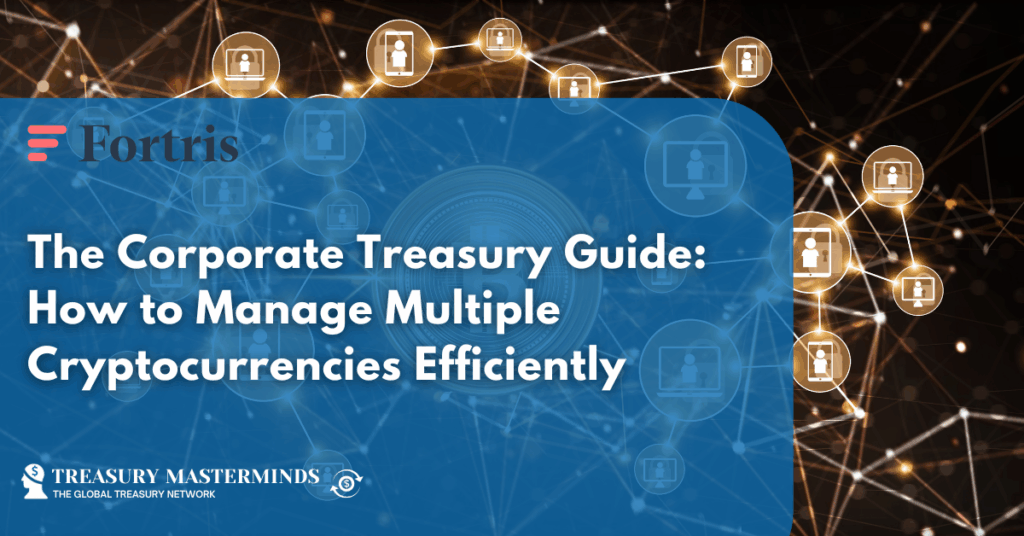
Familiar Treasury Stories – One Missed Payment, One Bad Rate, One Expensive Lesson
This article is written by Palm In a multinational environment, treasury teams often operate across dozens of entities, selling in multiple currencies, sourcing materials globally, and managing constant flows between accounts. The role is simple on paper: ensure the organisation always has the right amount of the right currency, in the right account, at the right time, without paying more than necessary. In practice? Exchange rates shift unpredictably, large payments can surface in forecasts at the last minute, and reconciling ERP data with bank statements can take hours. The challenge is to build an FX strategy that reduces risk, speeds up forecasting, and builds trust in every decision. Why FX Is More Than Just the Rate FX touches nearly every aspect of treasury work: Two main priorities drive the strategy: Without timely, transparent forecasts, both are harder to achieve. The “Wait and See” Trap For many treasury teams, the default FX approach is simple: wait until a payment is due, then make the trade. On the surface, it feels safe, no early conversions, no unnecessary exposure. But in volatile markets, that “safe” approach can be the most dangerous. Picture this: it’s Thursday afternoon, and the team is preparing to fund a large supplier payment. The forecast shows the payment comfortably covered. But overnight, the currency shifts sharply. By Friday morning, the cost to make that same payment has jumped by six figures. The problem wasn’t just the market move, it was that the team didn’t see it coming. With ERP data extractions taking hours and reconciliations lagging behind, the forecast was always one step too slow. The result? Missed opportunities to lock in favourable rates and a costly reminder that timing in FX is everything. The Overtrading Problem At the other end of the spectrum lies the overtrading trap. Determined to avoid nasty surprises, some teams adopt a “trade early and trade often” philosophy. On paper, it keeps liquidity in the right currency and reduces last-minute scrambles. In practice, it can quietly drain value from the business. Frequent conversions rack up bank fees, increase operational workload, and add complexity to cash positioning. Without a quick, reliable way to compare trading scenario, like the difference between weekly and monthly trades, teams are left making decisions in the dark. It’s a little like checking the weather every hour and changing your outfit each time, you’re busy, but you’re not necessarily better prepared. The Hedging Dilemma Hedging is supposed to be the safety net, a way to protect against unfavourable moves and bring predictability to planning. But a hedge is only as effective as the forecast it’s based on. Without early visibility into large, unbooked payments or the flexibility to adjust forecasts for sudden, high-impact events like tax payments or unexpected supplier requests, hedges can miss their mark. Instead of locking in savings, the team can end up over-hedged, under-hedged, or committed to rates that no longer make sense. It’s not that hedging doesn’t work, it’s that hedging without foresight is like buying insurance for the wrong house. You’re paying for protection, but it’s not where you need it most. From Reaction to Precision A shift from reactive processes to precision forecasting means: → Faster reconciliation through bank statement ingestion and quick ERP syncs.→ Early payment detection for large, unbooked transactions.→ Transparency via clear breakdowns of data sources and explainable machine learning assumptions.→ Variance analysis to explain deviations and build trust.→ Better visibility with improved forecast visualisations and embeddable dashboards.→ Proactive alerts for overdrafts, threshold breaches, and currency surpluses.→ Reduced manual burden with batch uploads (coming) and quick manual one-offs. The Impact of Forward-Looking FX Within months, teams adopting this approach have seen: Markets will always move. But with a forecasting process that’s fast, transparent, and trusted, treasury teams can act at the right time, in the right way, consistently. Also Read Join our Treasury Community Treasury Masterminds is a community of professionals working in treasury management or those interested in learning more about various topics related to treasury management, including cash management, foreign exchange management, and payments. To register and connect with Treasury professionals, click [HERE] or fill out the form below. Notice: JavaScript is required for this content.

The Corporate Treasury Guide: How to Manage Multiple Cryptocurrencies Efficiently
This article is written by Fortris Treasury management is changing fast. It’s no longer just about bank accounts and fiat. Bitcoin, Ethereum, stablecoins like USDT or USDC, and even more niche cryptocurrencies are becoming part of everyday operations for corporate treasurers. If you already manage a crypto treasury, you know the pressure. Juggling multiple cryptocurrencies isn’t optional anymore. Done well, it can strengthen liquidity, give your balance sheet more resilience, and help your team move quickly in volatile markets. But there are real challenges. Prices swing, security risks are higher, liquidity can be unpredictable, and compliance requirements are constantly evolving. To get the benefits without the pain, you need the right approach and the right tools. Keep all your crypto in one place Supporting multiple cryptocurrencies in one place is the foundation of a modern treasury. It starts with Bitcoin and Ethereum, but treasurers usually need to handle stablecoins like USDT and USDC, plus other assets that partners or clients may prefer. When you can manage everything in a single system, efficiency improves. There’s less manual tracking, fewer mistakes, and more time for actual decision-making. Best practices include: Set up your treasury so security and compliance are automatic Security is always the top priority. For treasuries, that means knowing when to use hot wallets for accessibility and cold wallets for safe storage. Both play a role, but relying on one alone creates unnecessary risk. You’ll also need to decide between custodial and non-custodial (self-custody) setups. Custodial wallets give convenience. Non-custodial wallets give more control but add responsibility. Many corporates land somewhere in the middle, using a mix. Multi-signature (multisig) protections are another key layer. They prevent any one person from moving funds unchecked. And with regulators paying closer attention, you’ll need clear audit trails and reporting baked into your system. Setting up security in this way reduces mistakes and keeps compliance from becoming a daily headache. Use task views and automate routine operations Even the most secure setup won’t help if your operations get bogged down. Tools that provide clear task lists and show pending approvals or anything holding up a transaction make a big difference. Automation also speeds up operations as well as cutting unnecessary costs. Automatic sweeps, consolidation of funds and transaction monitoring reduce manual work, limit errors and help lower operational costs. When you have clear visibility, you avoid delays and missed actions, and this gives the treasury team more time to focus on strategy instead of firefighting. Use dashboards and analytics to guide decisions Numbers matter. Treasurers need dashboards that show inflows, outflows, and KPIs at a glance. Real-time reporting gives you the ability to step in before issues turn into problems. Analytics also help you spot trends. Where’s liquidity tightening? Which assets are overexposed? With the right insights, you make better calls and can explain decisions clearly to the CFO or board. Connect your treasury to the systems you already use A corporate treasury shouldn’t live in isolation. A well-run treasury connects seamlessly to payments, accounting and other financial systems. If your crypto operations don’t integrate smoothly, you’ll end up reconciling by hand and that’s where mistakes can creep in. Think about cross-border payments, fiat-to-crypto exchanges and day-to-day accounting. A system that plugs into what you already use will save endless time and prevent headaches at month end. Balance risk and opportunity across your crypto assets Crypto brings opportunity, but also plenty of risk. Volatility is the obvious one, but it’s not the only concern. You also need to plan for operational continuity, especially in high-risk markets where regulations or infrastructure can shift overnight. Some treasurers use crypto as a liquidity buffer. Others see it as diversification. Either way, risk management means putting guardrails in place so your strategy doesn’t get derailed by a sudden price swing or system failure. Look for a solution that lets you diversify holdings, set exposure limits, track liquidity across multiple cryptocurrencies, and maintain operational continuity with built-in safeguards. With these tools, you can act quickly and confidently, even in volatile markets. Choose a treasury system that covers all your needs Vendor evaluation is about trust as much as technology. Ask how the provider handles compliance, what security certifications they have, and whether their platform is built for enterprise use. When you’re evaluating solutions, focus on features that matter most: Also Read Join our Treasury Community Treasury Masterminds is a community of professionals working in treasury management or those interested in learning more about various topics related to treasury management, including cash management, foreign exchange management, and payments. To register and connect with Treasury professionals, click [HERE] or fill out the form below. Notice: JavaScript is required for this content.